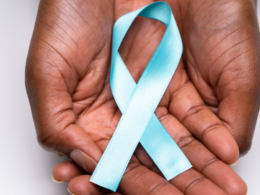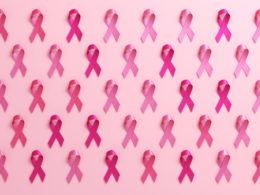Earwax, medically known as cerumen, is a naturally occurring substance in the ear canal that plays a crucial role in maintaining ear health. Despite its importance, there are many misconceptions about earwax and how it should be managed. This article will explore common misconceptions, causes of earwax buildup, and safe removal methods, helping to clarify what is true and false about earwax.
The Functions of Earwax: Debunking Misconceptions
Misconception 1: Earwax is Dirty and Unhealthy
One prevalent misconception is that earwax is dirty and unhealthy. This notion is false. Earwax is a natural substance that serves several essential functions in the ear canal:
- Lubrication: Earwax helps keep the ear canal moist and prevents it from becoming dry and itchy. This lubrication is vital for maintaining the health and comfort of the ear canal.
- Protection: Earwax acts as a barrier, trapping dust, dirt, and other foreign particles that may enter the ear canal. It prevents these particles from reaching the eardrum and causing damage.
- Antimicrobial Properties: Earwax has antimicrobial properties that protect the ear canal from bacterial and fungal infections. Its acidic environment discourages the growth of harmful microorganisms, making it an underrated defense mechanism against infections.
- Natural Cleansing: As new earwax is produced, it slowly pushes older earwax out of the ear canal, carrying debris and dirt with it. This natural movement helps keep the ear clean without the need for external cleaning.
“Earwax is a crucial component of our ear’s self-cleaning mechanism,” says Dr. Lisa Marshall, an audiologist with over 20 years of experience. “It’s not a sign of poor hygiene but a sign that your ears are functioning as they should.”
Misconception 2: Earwax Should Always Be Removed
Another common misconception is that earwax should always be removed. While maintaining hygiene is essential, routinely removing earwax is unnecessary for most people. In fact, excessive removal can lead to more significant problems:
- Irritation and Injury: Attempting to remove earwax with objects like cotton swabs or ear candles can push the wax deeper into the ear canal, leading to compaction or even injury.
- Increased Production: Removing earwax too frequently can stimulate the glands to produce more wax, exacerbating the problem.
However, there are situations where earwax removal may be necessary:
- Excessive Buildup: If earwax accumulates excessively, it can lead to symptoms such as hearing loss, ear pain, dizziness, or tinnitus. In these cases, professional removal is advisable.
- Impaction: When earwax becomes tightly packed and difficult to expel naturally, it can cause discomfort and hearing issues. An audiologist can safely remove impacted earwax using specialized tools.
“The belief that earwax needs constant removal is misguided,” says Dr. Mark Reynolds, an ENT specialist. “In most cases, earwax is best left alone unless it causes symptoms or discomfort.”
Causes of Earwax Buildup
Understanding the causes of earwax buildup is crucial for effective management. Here are some common factors that can lead to excessive earwax accumulation:
- Overproduction of Earwax: Some individuals naturally produce more earwax than others. This excess wax can accumulate in the ear canal, leading to buildup.
- Narrow or Curved Ear Canals: Individuals with narrow or curved ear canals may be more prone to earwax buildup as the wax may not naturally work its way out.
- Use of Hearing Aids or Earplugs: Devices inserted into the ear, such as hearing aids or earplugs, can obstruct the ear’s natural cleaning process, causing wax to build up more quickly.
- Frequent Use of Q-tips: Using Q-tips to clean the ears can push earwax deeper into the canal, leading to compaction and buildup over time.
- Age: As people age, their earwax may become drier and more prone to buildup. Changes in skin and glandular function can also contribute to this issue.
- Skin Conditions: Conditions like eczema or psoriasis can affect the skin of the ear canal, leading to increased earwax production.
“Understanding the underlying causes of earwax buildup is essential for preventing it,” explains Dr. Emily Carter, a dermatologist specializing in ear conditions. “It’s not just about cleaning but understanding what contributes to the issue.”
Safe and Effective Earwax Removal Methods
When earwax buildup becomes problematic, there are several safe and effective methods for removal. It’s important to choose the right method based on individual needs and circumstances:
- Over-the-Counter Ear Drops: Ear drops designed to soften earwax can make removal easier. These drops are available at most pharmacies and should be used according to the instructions.
- Warm Water Irrigation: Ear irrigation involves gently flushing the ear canal with warm water to remove earwax. This method is best done by a healthcare professional to avoid damage to the ear.
- Ear Microsuction: Microsuction is a precise and gentle procedure where a healthcare professional uses a suction device to remove excess earwax. This method is known for its safety and effectiveness, especially for sensitive ears.
- Olive Oil: Olive oil can soften earwax, making it easier to remove. Warm the oil slightly and use a dropper to put a few drops into the ear, then let it sit before draining it out.
- Professional Removal: For severe cases of earwax buildup, consulting an audiologist or ENT specialist for professional removal is advisable. They have the tools and expertise to remove wax safely and effectively.
“Attempting to remove earwax at home can be risky,” warns Dr. Jane Collins, a hearing specialist. “It’s best to consult a professional if you’re experiencing symptoms or discomfort.”
Preventing Earwax Buildup
Preventing earwax buildup involves a combination of good habits and understanding individual needs:
- Avoid Cotton Swabs: Cotton swabs can push earwax deeper into the ear canal. It’s best to avoid using them for cleaning.
- Limit Use of Earplugs: If you use earplugs regularly, try to limit their use to reduce the risk of earwax buildup.
- Regular Check-Ups: If you’re prone to earwax buildup, schedule regular check-ups with an audiologist to monitor and manage the condition.
“Prevention is key when it comes to earwax management,” advises Dr. Michael Turner, an audiologist. “Understanding your ear health and maintaining good habits can prevent many issues.”
The Verdict: Earwax is Essential
In conclusion, earwax is not dirty or unhealthy but a vital part of our ear’s natural defense system. While misconceptions about earwax abound, understanding its functions and how to manage it safely is essential for maintaining good ear health. Routine removal is not necessary unless symptoms arise, and professional guidance should be sought when dealing with excessive buildup.
Earwax buildup is a common issue that can lead to discomfort and potential hearing problems. Understanding the causes of earwax buildup and the various methods of earwax removal can help maintain ear health. It is essential to avoid using cotton swabs and seek professional help if you are prone to earwax buildup or experiencing symptoms. By taking these steps, you can help prevent earwax buildup and maintain healthy ears.
For those experiencing issues with earwax buildup, seeking professional help is recommended. “Earwax is a natural part of ear health, but when it causes problems, professional removal is the safest option,” concludes Dr. Sarah Evans, an audiologist.
If you’re experiencing earwax-related issues, consult with a healthcare professional for personalized advice and treatment options. Maintaining healthy ears is essential for overall well-being, and understanding the role of earwax is a crucial step in that process.









